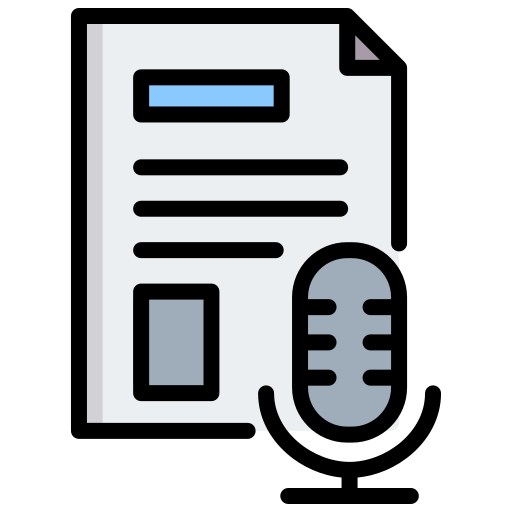
#75 – Hot for Teacher? (motivation to teach in the health professions)
Episode Host: Jason R. Frank.

Are we all insane? Given all the contemporary challenges and frictions at work, why do we teach? This episode unpacks the critical factors behind teacher motivation and delivers evidence-based strategies to inspire, recruit, and retain top educators in the health professions using Self Determination Theory.

Episode 75 transcript. Enjoy PapersPodcast as a versatile learning resource the way you prefer- read, translate, and explore!
Episode article
Orsini, C., Imafuku, R., Jennings, B., Neufeld, A., Tricio, J., & Kusurkar, R. A. (2024). “What influences clinical educators’ motivation to teach? A BEME systematic review and framework synthesis based on self-determination theory: BEME Review No. 90″. Medical Teacher, 1–9.
Episode notes
The notes for this weeks episode.
Background
We work during challenging days for healthcare professionals. Pandemics, cutbacks, more patients, chronic diseases, new technologies, more patients, metrics, quality standards, medicolegal issues, and more patients. Is it any wonder that teachers in HPE report high levels of burnout, educational exhaustion, and inability to take on more? But countries need more…more learners, more teaching, and new teaching methods. So why do teachers teach?
But countries need more…more learners, more teaching, and new teaching methods. So why do teachers teach?
There is literature describing the challenges of teachers in the health professions. The frictions include more learners, greater expectations, final and productivity pressures, low compensation, little acknowledgement, and incredible time pressure. The literature suggests more motivated teachers lead to better teaching, better teacher wellbeing, better teacher retention, and more learner-centred teaching. But what is the state of research about what motivates teachers in health professions?
Purpose
Enter Orsini et al, an authorship team from around the world (East Anglia to Gifu Japan, Calgary to Santiago and Amsterdam). Their paper is “What influences clinical educators’ motivation to teach? A BEME systematic review and framework synthesis based on self-determination theory: BEME Review No. 90:” in Medical Teacher, and it’s available online ahead of print in Oct 2024.
The authors “aimed to systematically search and synthesise research evidence from the clinical education literature on factors influencing educators’ motivation to teach, using a framework synthesis method, based on Self Determination Theory.”
Methods
The authors conducted their review following the STORIES and PRISMA guidelines. They searched multiple databases using terms like “motivation,” “educators,” and HPE (excluding “teaching”). Papers were excluded if they didn’t focus on undergraduate or postgraduate training, weren’t written in English, or didn’t present primary research (e.g., editorials). To ensure thoroughness, journal websites, reference lists, and grey literature were also reviewed.
Each study was evaluated using the MERSQI and JBI instruments. The data extraction process was systematic and included a calibration exercise to ensure consistency.
For analysis, the authors used narrative framework synthesis guided by Self-Determination Theory (SDT), which aligns closely with the study’s focus on motivation. SDT categorizes motivation into three types:
- Autonomous motivation (internally driven satisfaction).
- Controlled motivation (external, transactional factors).
- Amotivation (lack of motivation).
Building on previous research, the study examined factors influencing teacher motivation across three domains: systemic factors (“above”), individual attributes (“within”), and learner-related influences (“below”). These dimensions formed the theoretical framework for the study.
Result/Findings
The authors identified 7700 records, of which 29 finally met all the eligibility criteria. Publications were from 1998-2022, nearly all from the Global North. About half the studies involved physicians. Most studies involved surveys, interviews or focus groups. All papers were considered of “adequate” quality.
These studies revealed key drivers of motivation:
- Systemic Factors: Workload, compensation, and leadership styles.
- Individual Factors: A sense of purpose and intrinsic satisfaction.
- Learner-Related Factors: Engagement and challenges posed by learners.
A standout feature of the paper is a detailed framework mapping these factors against SDT’s motivation categories, offering practical insights for educators and administrators. We’ve developed a simplified version below, but please visit the original paper to access the original, more detailed one.
Factors for driving motivation and SDT’s motivation categories
| Motivation Source | Autonomous Motivation | Controlled Motivation | Amotivation |
|---|---|---|---|
| Systemic (Environment) | – Support from leadership – Opportunity to have input on teaching content | – Compensation – Job demands – Institutional recognition | – Lack of support – Unsupportive culture – High workload – Weak teaching evaluation systems |
| Personal (Educators) | – Sense of Purpose (institution, profession, learners) – Contribution to learners – Enjoyment of teaching – Professional growth and mastery | – Recruitment opportunities – Reduce own workload – Status and pride | |
| Learner-Related Factors | – Motivated and engaged learners – Positive feedback | – Learner recognition and appreciation | – Difficult or unprepared learners |
Conclusions
The authors concluded that their findings should inform efforts to enhance teacher motivation, education quality, and teacher retention. They finished with 12 recommendations:
- Involve educators in course design for placements and on an overarching level in undergraduate/postgraduate education and/or curriculum development.
- Line managers/supervisors should adopt a transformational as opposed to a transactional leadership style.
- Plan manageable workload and protected teaching time.
- Use comprehensive teaching evaluation plans to inform educator practice.
- Build adequate and contextual recognition structures.
- Organise support from and communication with the educational programme.
- Nurture clinical educators’ interests in their teaching role.
- Emphasise enjoyment and altruistic reasons to teach.
- Set up mentoring schemes and longitudinal placements to develop long-term relationships with learners.
- Provide faculty development opportunities for teaching and clinical skills.
- Build communities of practice/learning amongst clinical educators.
- Raise learners’ awareness on their responsibility towards clinical educators’ optimal motivation.
PaperClips
- This paper covers a critically important topic in our contemporary HPE enterprise: teacher engagement. The findings should be useful to anyone who agonizes over how to motivate, recruit, and retain good teachers.
- The methods used were systematic, but the exclusion criteria likely keep the voices of teachers in the Global South out of the review.
Articles and websites mentioned in this episode
Articles: “Using framework analysis methods for qualitative research: AMEE Guide No. 164”.
Majid U, Vanstone M. “Appraising qualitative research for evidence syntheses: a compendium of quality appraisal tools. Qualitative health research”, 2018 Nov;28(13):2115-31.
Website: OpenGrey (www.opengrey.eu), is a comprehensive database specializing in “grey literature” produced in Europe. Grey literature includes non-commercial publications like research reports, doctoral dissertations, technical documents, white papers, and conference proceedings. OpenGrey contains over 700,000 bibliographic references across science, technology, biomedicine, economics, and social sciences.
It’s a resource for researchers and educators, offering tools to export bibliographic records and locate documents. While it doesn’t store full-text documents directly, it connects users to sources and institutions where the documents can be accessed.

0 comments